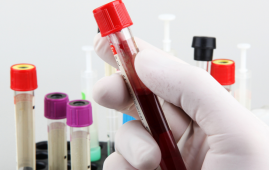

A recent publication in Biology Methods & Protocols highlights the creation of a novel epitope display system by German researchers. This system is designed to showcase epitopes in mammal cells, particularly for studies related to immunization. The researchers assert that this innovative method holds significant potential to enhance the effectiveness of immunization initiatives, like vaccine development.
The stimulation of blood cells to generate antibodies targeting a specific viral protein plays a crucial role in the vaccine development for human use. Researchers face challenges in this process as the production of antibodies in subjects depends on the design and administration of antigens—components of the virus used to assess vaccine efficacy.
A pivotal facet of virus research revolves around the expression and purification of antigens for vaccination purposes. Animals, when immunized with meticulously prepared antigens, generate specific antibodies against these antigens. However, scientists must isolate the antigen to ensure the formulation and vaccine development precisely targeting the intended disease.
Following the purification of the antigen, researchers can progress to vaccine development, prompting subjects to produce the desired antibodies. Notably, the isolation process becomes particularly time-intensive, especially when endeavoring to create lab-produced antigens, given the rapid mutation rate of viruses. Consequently, it often takes several weeks for scientists to successfully craft the appropriate antigens.
In this study, researchers innovated a novel approach to elicit immune responses specifically targeted towards a particular objective. Through the fusion of antigen proteins with a membrane-bound protein derived from tetraspanin, the scientists engineered fusion proteins that are predominantly showcased on the surface of human cells.
The presentation of proteins on the cell surface via a carrier protein triggers the production of antibodies specifically directed against the relevant antigens. An additional benefit is that these antigens mirror the conformation and modifications of the corresponding proteins in the virus, as they are synthesized by cells resembling those naturally infected by the virus in the human body.
This innovative display technology holds promise as a potentially more dependable immunization method. In this investigation, scientists successfully elicited antibodies against various proteins, emphasizing the receptor-binding domain of SARS-CoV-2, the causative virus of Coronavirus Disease 2019 (COVID-19). The newly created anchor protein enables researchers to target a particular disease for immunization without the necessity of antigen purification. The researchers express confidence that this technique has the potential to significantly expedite the immunization process.
“This work is based on the receptor binding domain of SARS-CoV-2 and is only the beginning of a very interesting immunization technique,” said Daniel Ivanusic, one of the paper’s authors. “The most challenging, significant, and exciting application for us employing the tANCHOR technology is to induce neutralizing antibodies against HIV-1. I think this will be great.”
Provided by Oxford University Press
More information: tANCHOR fast and cost-effective cell-based immunization approach with focus on the receptor-binding domain of SARS-CoV-2, Biology Methods & Protocols (2023).
more recommended stories
 New Blood Cancer Model Unveils Drug Resistance
New Blood Cancer Model Unveils Drug ResistanceNew Lab Model Reveals Gene Mutation.
 Osteoarthritis Genetics Study Uncovers New Treatment Hope
Osteoarthritis Genetics Study Uncovers New Treatment HopeOsteoarthritis- the world’s leading cause of.
 Antibody Breakthrough in Whooping Cough Vaccine
Antibody Breakthrough in Whooping Cough VaccineWhooping cough vaccine development is entering.
 Mental Health Pros May Miss Bulimia Signs – Here’s Why
Mental Health Pros May Miss Bulimia Signs – Here’s WhyA recent study by the University.
 Scientists Unveil Next-Gen Eye-Tracking with Unmatched Precision
Scientists Unveil Next-Gen Eye-Tracking with Unmatched PrecisionEye-tracking technology has long been a.
 Men5CV: Hope for Ending Africa’s Meningitis Epidemics
Men5CV: Hope for Ending Africa’s Meningitis EpidemicsA landmark global health study led.
 Weekend Effect: Higher Mortality for Friday Surgeries
Weekend Effect: Higher Mortality for Friday SurgeriesA recent study published in JAMA.
 Stem Cell Therapy Shows 92% Success in Corneal Repair
Stem Cell Therapy Shows 92% Success in Corneal RepairA groundbreaking stem cell therapy known.
 Gene Therapy for Maple Syrup Urine Disease
Gene Therapy for Maple Syrup Urine DiseaseResearchers at UMass Chan Medical School.
 How Fast Are Your Organs Aging? Simple Blood Test May Tell
How Fast Are Your Organs Aging? Simple Blood Test May TellNew research from University College London.

Leave a Comment